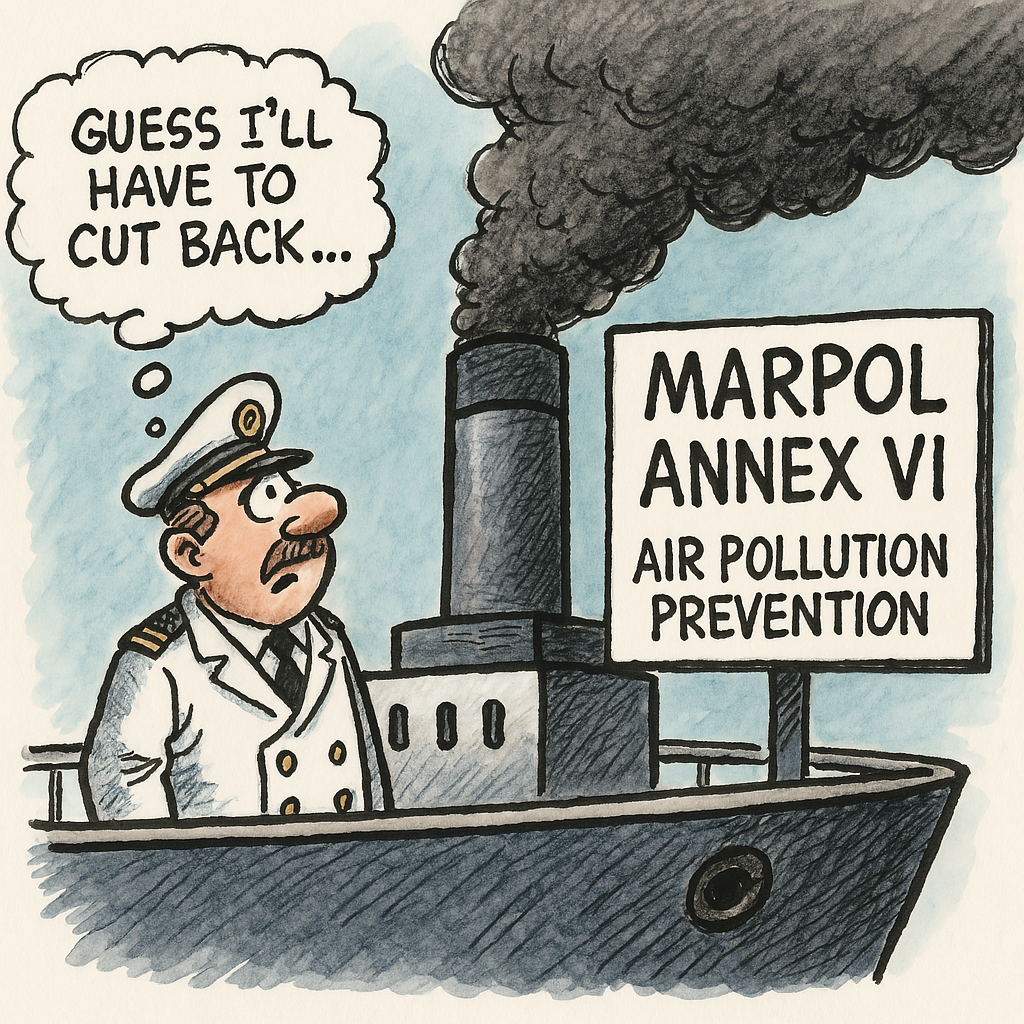Your cart is currently empty!

📘 MARPOL Annex VI – Prevention of Air Pollution from Ships
Objective:
MARPOL Annex VI aims to limit air pollution from ships by setting international standards for emissions, fuel quality, and energy efficiency. It targets harmful airborne substances that affect human health and contribute to climate change.
Scope of Application:
- Applies to all ships operating internationally.
- Covers engine emissions, fuel sulfur content, and greenhouse gas (GHG) measures.
- Includes Energy Efficiency regulations for both new and existing ships.
Key Areas of Regulation:
1️⃣ Air Pollutants Regulated by Annex VI:
⚠️ Sulfur Oxides (SOx):
- Strict limits on sulfur content in marine fuel oil:
- Global limit: max 0.50% m/m (since 2020)
- Emission Control Areas (ECAs): max 0.10% m/m
⚠️ Nitrogen Oxides (NOx):
- Tiered NOx emission limits (Tier I, II, III), depending on engine type and construction date.
- Tier III applies in NOx ECAs (e.g., North American ECA).
⚠️ Particulate Matter (PM) and Volatile Organic Compounds (VOCs):
- Controlled through fuel quality and equipment standards.
❌ Ozone-Depleting Substances:
- Use of substances like CFCs and halons is prohibited.
- Ships must keep a record of refrigerants used and disposed.
2️⃣ Energy Efficiency and GHG Reduction
⚙️ EEDI – Energy Efficiency Design Index
- Mandatory for new ships
- Requires improved fuel efficiency per tonne-mile
🔄 EEXI – Energy Efficiency Existing Ship Index
- Applies to existing ships
- Introduced in 2023 to improve performance of older vessels
📈 CII – Carbon Intensity Indicator
- Measures and rates annual carbon emissions per transport work
- Ratings (A to E) affect ship operation and may trigger improvement plans
3️⃣ Emission Control Areas (ECAs):
In designated ECAs, stricter emission limits apply for SOx, NOx, and PM. These include:
- Baltic Sea
- North Sea
- North American coast
- US Caribbean Sea
⚙️ Compliance Tools:
- Use of low-sulfur fuel
- Installation of exhaust gas cleaning systems (scrubbers)
- Switching to alternative fuels (e.g., LNG, methanol)
- Speed and route optimization for better energy efficiency
📘 Certification and Recordkeeping:
- International Air Pollution Prevention (IAPP) Certificate is mandatory for ships ≥400 GT
- Ships must maintain:
- Fuel changeover logs (when entering ECAs)
- Ozone-depleting substance record books
- Energy efficiency documentation
✅ Summary:
MARPOL Annex VI addresses one of the most urgent global issues: air pollution and climate impact from ships. Through emission limits, fuel standards, and energy efficiency measures, it helps the maritime industry:
- Reduce health risks from SOx, NOx, and PM
- Limit environmental impact on sensitive areas
- Transition toward decarbonization
